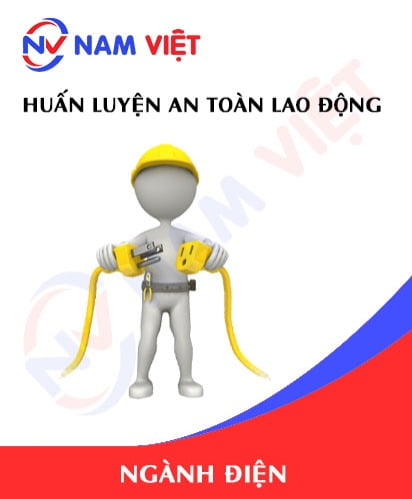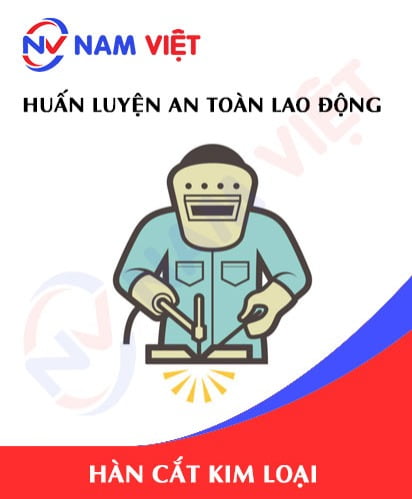Occupational Safety Training for Operating Concrete Mixer Trucks
99,000 ₫
Note: The above price is calculated for one person and may fluctuate depending on the number of participants in the course and market dynamics. For more accurate pricing support, please refer to the pricing table or contact our consulting staff directly.
Occupational safety is an important issue when operating a concrete mixer truck and needs to be addressed promptly to ensure the health and safety of workers and enhance the reputation of businesses here. The Occupational Safety Training course is one of the effective solutions to raise awareness of how to prevent workplace accidents for workers when operating a concrete mixer truck.
Table of Contents
Toggle1. Overview of Concrete Trucks
a. What is a Concrete Truck?
A concrete truck, also known as a concrete mixer truck or simply a concrete truck, is a specially designed vehicle used to transport concrete from the production plant to construction sites. The truck features a large, usually cylindrical drum made from high-strength materials to store and transport concrete without compromising its quality.
An essential part of the concrete truck is the integrated mixing system, typically mounted directly on the drum. This system ensures the concrete remains uniformly mixed during transport. Upon arrival at the construction site, the concrete can be pumped from the drum to the area requiring placement.

b. How a Concrete Truck Works
The operation of a concrete truck mainly involves transporting and maintaining the quality of concrete from the production plant to the construction site. Here’s an overview of its working principle:
- Concrete Drum:
- The truck has a large, usually cylindrical drum made from high-strength materials.
- The concrete is mixed inside the drum and kept in optimal condition until reaching the construction site.
- Concrete Mixing System:
- An integrated mixing system is installed in the drum.
- This system includes mixing blades or paddles to maintain the concrete’s uniformity during transport.
- Pumping and Pouring Concrete:
- When the truck arrives at the construction site, concrete pouring is carried out.
- A pump system can be used to discharge concrete from the drum to the desired location.
- Temperature and Time Control:
- Some concrete trucks can control the concrete temperature in the drum to prevent it from being affected by weather conditions.
- Maintaining Concrete Quality:
- The main goal of the concrete truck is to maintain the quality of the concrete. The drum and mixing system prevent segregation, water loss, or layer separation that can occur if concrete is transported long distances without proper handling.

Tracked Concrete Truck
c. Industries that Use Concrete Trucks
Concrete trucks are mainly used in the construction and civil engineering sectors. Specifically, the following industries and activities commonly use concrete trucks:
- Residential Construction:
- Housing projects such as urban developments, apartment complexes, and individual homes.
- Public construction works like bridges and roads.
- Industrial Construction:
- Factories, industrial plants, and industrial areas where infrastructure is required.
- Transport Infrastructure Construction:
- Roads, bridges, tunnels, and related transport projects.
- Energy Projects:
- Power plants, substations, and energy-related construction works.
- Water Infrastructure Projects:
- Dams, water treatment plants, and related water infrastructure.
- Agricultural Construction:
- Warehouses, food processing plants, and agriculture-related infrastructure.
2. Overview of Safety Training for Operating Concrete Trucks
a. What is Occupational Safety Training?
- Occupational safety training for operating concrete trucks consists of sessions designed to raise workers’ awareness about preventing workplace accidents. Workers directly operating concrete trucks belong to Group 3.
- The training course helps workers identify and avoid hazards, reducing the risk of workplace accidents.
REGISTER FOR OCCUPATIONAL SAFETY TRAINING SERVICE
b. Training Duration
Initial Safety Training Duration:
- Total training time is at least 24 hours, including exams.
- 8 hours of theory on policies, laws, and occupational safety regulations
- 8 hours of theory on basic occupational safety knowledge
- 4 hours of theory on specialized training content
- 2 hours of practical training on specialized content
- 2 hours of theoretical exam at the end of the course
The training center will divide the sessions according to the workers’ schedules, usually in 6 sessions over 3 days if continuous time is available.
Periodic Safety Training:
- Before the occupational safety card expires, workers must complete periodic occupational safety training, with a duration of at least 50% of the initial training duration.
Explanation: The total duration of periodic safety training is at least 12 hours, including exams. Upon successful completion, workers receive a renewed safety card.
c. Training Content
| No. | TRAINING CONTENT | TRAINING TIME (HOURS) | |||
| Total | Including | ||||
| Theory | Practice | Exam | |||
| I | Policies and occupational safety regulations | 8 | 8 | 0 | 0 |
| 1 | Overview of laws and regulations on occupational safety and hygiene. | 6 | 6 | ||
| 2 | Standards and technical safety regulations. | 1 | 1 | ||
| 3 | Specific regulations from state authorities on safety when building, expanding, or renovating facilities, using and maintaining machinery, equipment, and materials with strict safety requirements. | 1 | 1 | ||
| II | Basic occupational safety knowledge | 8 | 8 | 0 | 0 |
| 1 | Basic knowledge of workplace hazards. | 4 | 4 | ||
| 2 | Methods to improve working conditions. | 1 | 1 | ||
| 3 | Safety culture in production and business. | 1 | 1 | ||
| 4 | Rights and responsibilities of employers and workers; safety policies; functions of safety officers. | 1 | 1 | ||
| 5 | Safety rules, signage, personal protective equipment; first aid skills and occupational disease prevention. | 1 | 1 | ||
| III | Specialized Training Content | 6 | 4 | 2 | 0 |
| Comprehensive knowledge about machines, equipment, hazardous materials; risk management and safe work procedures. | 6 | 4 | 2 | ||
| IV | End-of-course Safety Exam | 2 | 2 | 0 | 0 |
| Total | 24 | 22 | 2 | ||
See more training content of the 6 groups
d. Occupational Safety Card
After completing the occupational safety training and passing the exam, workers are issued a safety card (commonly called a Group 3 occupational safety certificate).
The card shows the worker’s name, date of birth, job, working environment, training duration, official seal, and signature confirming completion.
According to Article 24, Clause 2 of Decree 44/2016/ND-CP, there are two cases:
- If the employer and worker have a labor contract, the employer must sign and stamp the safety card for Group 3 workers after training and passing the exam.
- If the worker is freelance or seasonal and has no labor contract, the training organization must sign and stamp the safety card after training and passing the exam.

Group 3 Occupational Safety Card for Concrete Truck Operation
3. Hazards When Operating Concrete Trucks
Operating a concrete truck requires attention and adherence to safety rules, as there are many potential hazards during the process. Below are some common hazards when operating a concrete truck:
- Heavy Weight:
- Concrete is very heavy, increasing the risk of losing control during operation, especially when the truck is actively pouring concrete.
- Dynamic Impact:
- The pouring and transportation process can create strong dynamic forces that may affect the drive system, brakes, and overall vehicle structure.
- Uneven Load:
- An uneven load inside the container can lead to unwanted movement of concrete, affecting the balance and handling of the truck.
- Spillage During Transport:
- If the concrete mixer system malfunctions or transport issues occur, concrete may spill from the container, creating hazards for people nearby.
- Working at Heights:
- Pouring concrete from height can create strong impact when it hits the surface below, causing noise and vibrations.
- Chemicals and Dust:
- Although concrete mainly consists of natural materials, the production and transportation process may generate chemicals and dust, which can be harmful to workers and nearby people.
- Weather Conditions:
- Bad weather, such as heavy rain or snow, can increase slipperiness and reduce visibility, raising the risk of accidents.
- Concrete Movement:
- During transport, concrete may shift or settle inside the container, affecting the truck’s stability.

4. Measures to Prevent Workplace Accidents When Operating Concrete Trucks
To control workplace accidents when operating concrete trucks, there are important measures that both drivers and managers must implement. Key measures include:
- Training and Education:
- Provide quality training for all concrete truck drivers on safe driving practices and specific safety rules related to concrete handling.
- Regular Inspection and Maintenance:
- Conduct regular inspections and proper maintenance for both the truck and the concrete mixer system to ensure proper operation.
- Load Control:
- Adhere to the specified load limits to avoid the risk of losing control during concrete transport.
- Weather Control:
- Avoid operating concrete trucks in adverse weather conditions such as heavy rain, snow, or strong winds to reduce accident risks.
- Safe Concrete Pouring:
- Ensure concrete pouring follows safety rules, including notifying and securing the area for everyone nearby.
- Dust and Chemical Control:
- Provide preventive measures to minimize exposure to dust and chemicals generated during concrete production and transport.
- Safety Equipment:
- Ensure that all safety equipment such as helmets, safety shoes, and protective clothing are fully and properly used.
- Concrete Quality Monitoring:
- Monitor the quality of concrete in the container to ensure it meets technical requirements and does not create hazards during transport.
- Effective Communication:
- Establish an effective communication system between drivers and managers to monitor truck conditions and detect issues early.
- Distribution of Safety Instructions:
- Provide and ensure that all staff involved in concrete truck operation read and fully understand safety instructions.
- Periodic inspection of concrete trucks to detect safety issues such as mechanical failures or wear, reducing the risk of workplace accidents.
5. Benefits of Labor Safety Training
An Toàn Nam Việt provides businesses with the following benefits after completing labor safety training courses according to Decree 44/2016/ND-CP on occupational safety and hygiene:
- Workers can identify potential workplace hazards and take preventive measures to avoid accidents.
- Businesses can establish risk prevention measures in production, operation, and maintenance processes.
- Minimize costs associated with workplace safety incidents.
- Continuous production increases labor productivity and product quality.
- Compliance with labor safety laws avoids legal risks.
- Enhances reputation and professionalism, boosting the company’s brand image.
Nam Việt’s training courses are a proactive solution to prevent external hazards from harming individuals, helping them avoid injury or worse.
REGISTER FOR LABOR SAFETY TRAINING SERVICES
6. Customer Feedback After Completing Training
An Toàn Nam Việt has years of experience accompanying many businesses across Vietnam, especially in the southern provinces. This responsibility is highly valued, and thus our labor safety training is increasingly professional. The growth of An Toàn Nam Việt is driven by positive feedback and constructive suggestions from our partners. Below are testimonials from our clients.
7. An Toàn Nam Việt Labor Safety Training Capabilities
An Toàn Nam Việt is a reputable and high-quality labor safety training center in Vietnam, offering continuous courses at factories, plants, or construction sites across all 63 provinces.
REGISTER FOR LABOR SAFETY TRAINING SERVICES
Labor Safety Training License
- An Toàn Nam Việt has been inspected and certified by the Vietnam Ministry of Labor – Safety Department, reinforcing our capabilities in labor safety training.

Training Materials
- All materials for labor safety training courses are reviewed to ensure accuracy and effectiveness.
- Teaching methods of instructors are standardized according to An Toàn Nam Việt guidelines, designed by experts in occupational safety training to maximize learning outcomes.
Facilities
- Controlling classroom conditions enhances training efficiency and student learning outcomes.
- Our facilities provide spacious, well-equipped classrooms meeting standards for area, lighting, and training devices.
8. Nationwide Reputable Safety Training Center
At An Toàn Nam Việt, we prioritize the professional delivery of labor safety training. Teaching workers to protect themselves equips them with essential safety skills.
To ensure effective training, we meticulously prepare all materials, tools, devices, curriculum, audio, and lighting.
Our instructors are experts with years of experience and research in hazard recognition and prevention across industries.
Classes are practical and easy to visualize, allowing workers to comfortably absorb knowledge aligned with Decree 44/2016/ND-CP.
Our training center is proud to offer professional labor safety training with the following advantages:
- Competitive training costs while maintaining high quality.
- Flexible scheduling to suit company production needs.
- Quick certification procedures in compliance with the law.
- Experienced instructors with years of expertise.
- Classroom control enhancing teaching efficiency and student learning outcomes.
- Curriculum tailored to workplace safety for businesses.
- Dedicated, professional service providing fast and accurate support.

9. Additional Labor Safety Training References
- Labor safety materials for operating concrete trucks
- Labor safety training materials set
- Labor safety training test set
- Labor safety multiple-choice test for concrete truck operation
- Slide presentation for labor safety training in concrete truck operation
1 review for Occupational Safety Training for Operating Concrete Mixer Trucks
No comments yet















phanminhhang341
Very good safety training service